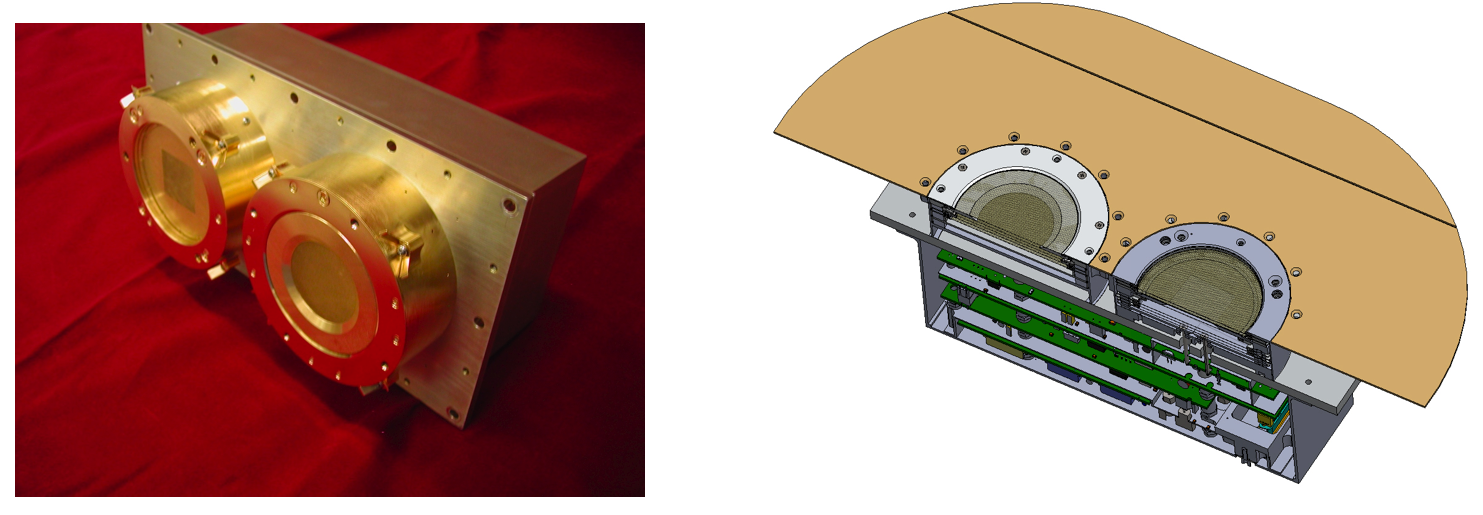IVM is derived with little change from the instrument that is presently operating successfully as part of the CINDI project on the C/NOFS satellite. The IVM sensors and sensor electronics are constructed as a single package and are mounted to view approximately along the spacecraft velocity vector through a common aperture plane that is isolated from the spacecraft ground. Figure 1 shows the sensor configuration that is flying on the CINDI mission and and a schematic illustration of the ICON configuration.
The aperture plane serves as the reference ground for the sensors and ensures that all external fields are uniform and normal to the entrance aperture. A portion of the aperture plane, the SenPot reference surface, is isolated from the reference ground. The SenPot amplifier generates a potential with respect to spacecraft ground to maintain the IVM reference ground at the floating potential with respect to the plasma. The operation and data analysis techniques have extensive heritage from many previous missions starting with Atmosphere Explorer in the 1970’s and subsequently the Defense Meteorological Satellite Program and ROCSAT-1 before the CINDI mission in 2008.

Figure 1. CINDI IVM shown schematically as it will appear on ICON.